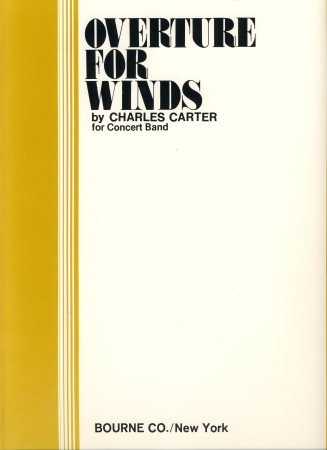
PROGRAM NOTES
Overture for Winds (1959)
During his residency at Florida State University, Charles Carter composed Overture for Winds in 1959. This piece provides great challenges to both the performer and the audience members. The performers must execute tempo, dynamic and articulation changes without “giving away” abrupt shifts to the audience. For the audience, the piece can seem like a roller coaster ride of changes, shifting between fast and slow, yet seamlessly regaining strength and driving toward a brilliant close. This work is underplayed in wind band/ensemble programs, which is quite a shame given the strength and focus required to accomplish such a feat. Mr. Carter created a masterpiece of academic and entertainment value.
- Program Note from Illinois State University University Band concert program, 5 October 2017
RHYTHMANIA! (2020)
Rhythmania! is a piece full of energy and drive with a focus on rhythmic independence. Everyone has a fun part to play on their own instruments, as well as non-traditional “percussion”parts with pencil taps and handclaps. The actual percussion parts involve a variety of instruments and are quite active as well. The attainable rhythm patterns, though they sound somewhat syncopated, are really just based on eighth notes and eighth rests. Even counting and clapping the parts for reinforcement is fun!
Not only is Rhythmania! suitable for first or second-year students ready for a rhythmic challenge, it is also perfect for more mature players needing a fun pep-rally or concert tune. Whatever the scenario, students of all ages will have a blast playing Rhythmania!
- Program Note from Illinois State University University Band concert program, 5 October 2017
Måndalen Landscapes! (2004)
The picturesque town of Måndalen lies amid snow-covered mountains and scenic fjords on the west coast of Norway. Måndalen Landscapes was commissioned by and written for Måndalen Skule og Ungdomskorps (Måndalen School and Youth Band) for a major concert in November 2003 at the instigation of its conductor, John Hudson, a long-time friend of composer Philip Sparke.
Sparke set out to capture the beauty of the area in music and the piece opens with an evocation of the crisp, clear air of a Norwegian morning. After this introduction, the main theme is stated on clarinets and saxophones. A central bridge section takes the listener through several moods until the brass reintroduce the main theme under a woodwind descant. Material from the introduction brings the work to a peaceful close.
- Program Note from publisher
American Hymnsong Suite (2007)
1. Prelude on “Wondrous Love”
2. Ballad on “Balm in Gilead”
3. Scherzo on “Nettleton”
4. March on “Wilson”
American Hymnsong Suite is firmly rooted in my family history as church musicians. I grew up singing and playing many different hymns, including the four tunes featured in this work. The final impetus to compose this particular treatment came during the course of an organ concert in Atlanta, Georgia. One section of the program featured innovative settings of three hymns. With the gracious consent of composers Joe Utterback and Brooks Kukendall, I adapted their settings to act as the inner movements of the suite, bracketed with my own original treatments of favorite hymns.
The Prelude on Wondrous Love (“What Wondrous Love is This”) opens with a chant-like statement of this Southern tune before proceeding to a more kinetic retelling. Ballad on “Balm in Gilead” features a rich jazz harmonization of this familiar spiritual. The Scherzo on “Nettleton” (“Come Thou Fount of Every Blessing”) contains all the rhythmic playfulness inherent in the best orchestral third movements, and the March on “Wilson” (“When We All Get to Heaven”) calls to mind the wildest marching band ever heard.
While audience members will certainly make various connections to this piece, the ongoing goal is to introduce all listeners to the richness of our American musical heritage.
- Program Note by composer
The Governor’s Own (1921)
Alton Adams
edited by Loras Schissel
Ludwig Masters
Alton Augustus Adams, Sr. (November 4, 1889 – November 23, 1987) is remembered primarily as the first black bandmaster in the United States Navy. His music was performed by the bands of John Philip Sousa and Edwin Franko Goldman and his march, The Governor's Own (1921) appears as the first selection on the bicentennial album Pride of America, recorded by the Goldman band. It remains one of the composer’s most enduring works, and a fine example of the golden age of American marches.
This new performance edition for concert band has been meticulously edited by Library of Congress senior musicologist Loras John Schissel









